|
Pycnodonte convexa (Say)
aka Gryphaea Convexa
The
oysters
5
6
Exogyra and
Pycnodonte were the most common
bivalves of the
Cretaceous period. Lying on the seabed floor with the convex side in
the mud and the flat side positioned at the seafloor surface for
camouflage.
Pycnodonte convexa is strongly
convex on the lower side and concave on the upper, with a lobe like
extension to one side. This shell may be as wide as it is long and is
most often found with drill holes from the boring sponge
Cliona cretacica.
This species is quite common, often found in large numbers where the
shell beds are exposed along the stream banks. The vast majority of
these oysters are found with the original shell intact with a few
locations producing internal casts.
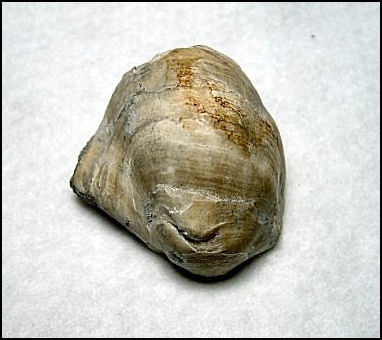
This specimen is a little over 3 inches
The lobe like extension can be seen on the left in this picture
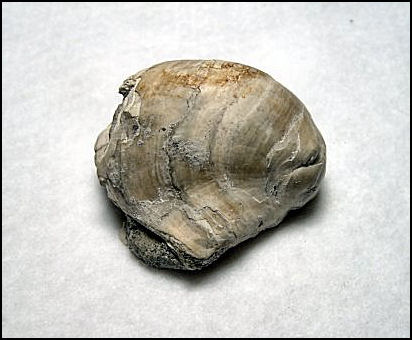
Pycnodonte convexa lower side
Monmouth County, NJ
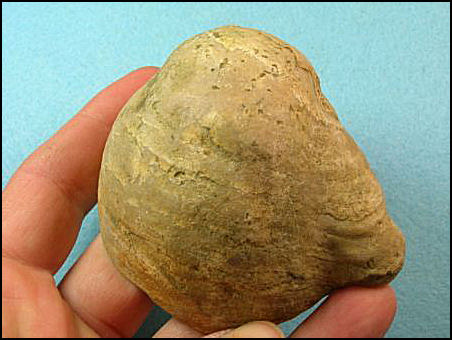
These shells are prone to breakage along the growth
lines.
This is a complete specimen, 2 3/4 inches long by 3 1/4 inches wide.
Note the bore holes in the top of the shell.
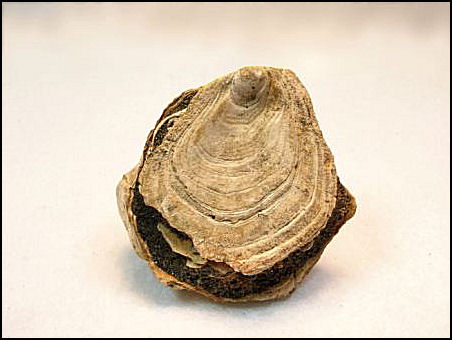
The upper valve is concave
with concentric growth ridges.
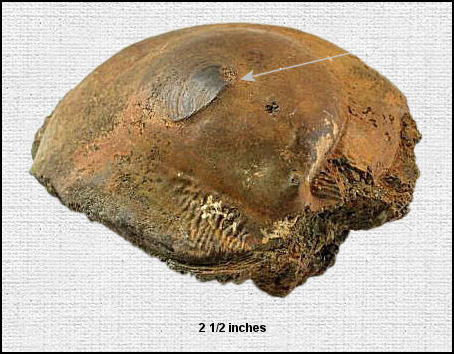
Internal cast of Pycnodonte convexa.
Note the large muscle scar, this is where the muscles used to
open and close the shell would have anchored to the shell.
|


